Ahmad Hoorfar
Compressive Sensing Based Sparse MIMO Array Optimization for Wideband Near-Field Imaging
Aug 09, 2022



Abstract:In the area of near-field millimeter-wave imaging, the generalized sparse array synthesis (SAS) method is in great demand. The traditional methods usually employ the greedy algorithms, which may have the convergence problem. This paper proposes a convex optimization model for the multiple-input multiple-output (MIMO) array design based on the compressive sensing (CS) approach. We generate a block shaped reference pattern, to be used as an optimizing target. The pattern occupies the entire imaging area of interest in order to involve the effect of each pixel into the optimization model. In MIMO scenarios, we can fix the transmit subarray and synthesize the receive subarray, and vice versa, or doing the synthesis sequentially. The problems associated with focusing, sidelobes suppression, and grating lobes suppression of the synthesized array are examined in details. Numerical and experimental results demonstrate that the synthesized sparse array can offer better image qualities than the sparse arrays with equally spaced or randomly spaced antennas with the same number of antenna elements.
Inverse-designed Metastructures Together with Reconfigurable Couplers to Compute Forward Scattering
Jul 26, 2022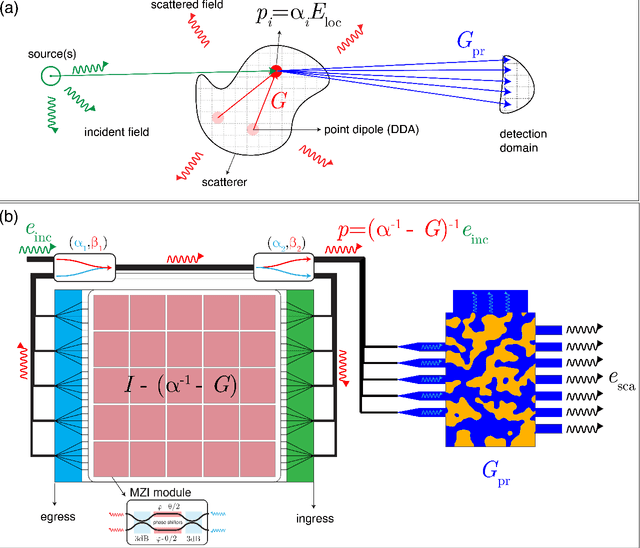
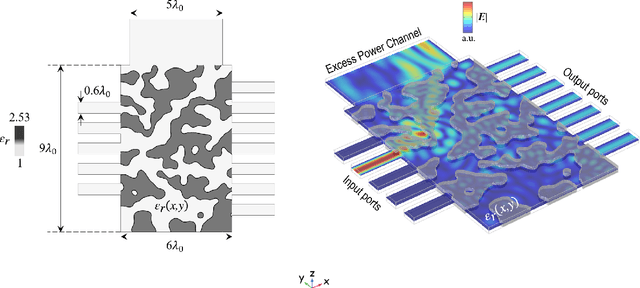
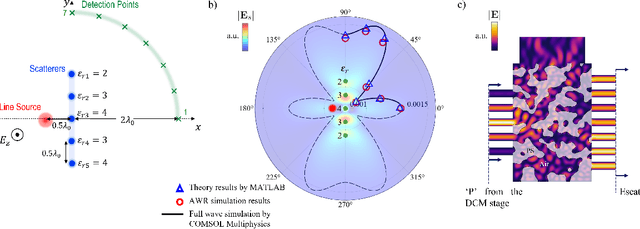
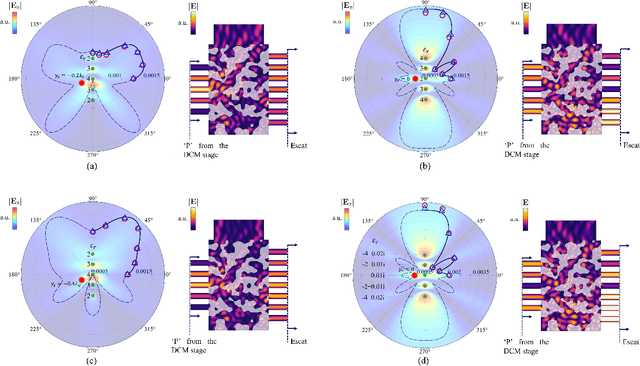
Abstract:Wave-based analog computing in the forms of inverse-designed metastructures and the meshes of Mach-Zehnder interferometers (MZI) have recently received considerable attention due to their capability in emulating linear operators, performing vector-matrix multiplication, inverting matrices, and solving integral and differential equations, via electromagnetic wave interaction and manipulation in such structures. Here, we combine these two platforms to propose a wave-based metadevice that can compute scattered fields in electromagnetic forward scattering problems. The proposed device consists of two sub-systems: a set of reconfigurable couplers with a proper feedback system and an inverse-designed inhomogeneous material block. The first sub-system computes the magnitude and phase of the dipole polarization induced in the scatterers when illuminated with a given incident wave (matrix inversion). The second sub-system computes the magnitude and phase of the scattered fields at given detection points (vector-matrix multiplication). We discuss the functionality of this metadevice, and through several examples, we theoretically evaluate its performance by comparing the simulation results of this device with full-wave numerical simulations and numerically evaluated matrix inversion. We also highlight that since the first section is reconfigurable, the proposed device can be used for different permittivity distributions of the scatterer and different incident excitations without changing the inverse-designed section. Our proposed device may provide a versatile platform for rapid computation in various scattering scenarios.
Efficient Antenna Optimization Using a Hybrid of Evolutionary Programing and Particle Swarm Optimization
May 11, 2022



Abstract:In this paper, we present a hybrid of Evolutionary Programming (EP) and Particle Swarm Optimization (PSO) algorithms for numerically efficient global optimization of antenna arrays and metasurfaces. The hybrid EP-PSO algorithm uses an evolutionary optimization approach that incorporates swarm directions in the standard self-adaptive EP algorithm. As examples, we have applied this hybrid technique to two antenna problems: the side-lobe-level reduction of a non-uniform spaced (aperiodic) linear array and the beam shaping of a printed antenna loaded with a partially reflective metasurface. Detailed comparisons between the proposed hybrid EP-PSO technique and EP-only and PSO-only techniques are given, demonstrating the efficiency of this hybrid technique in the complex antenna design problems.
Antenna Optimization Using a New Evolutionary Algorithm Based on Tukey-Lambda Probability Distribution
Jun 06, 2020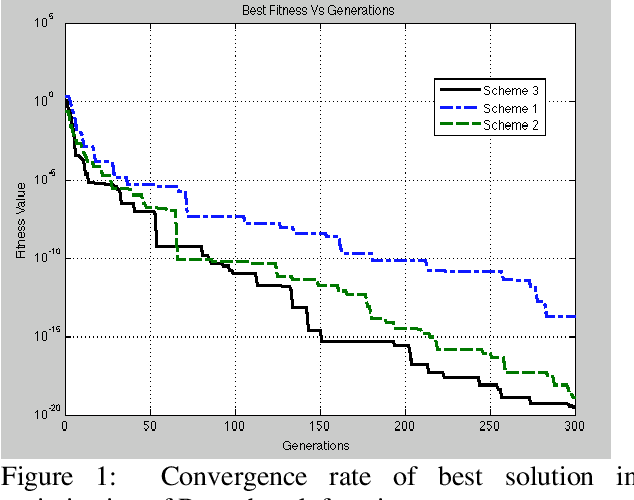
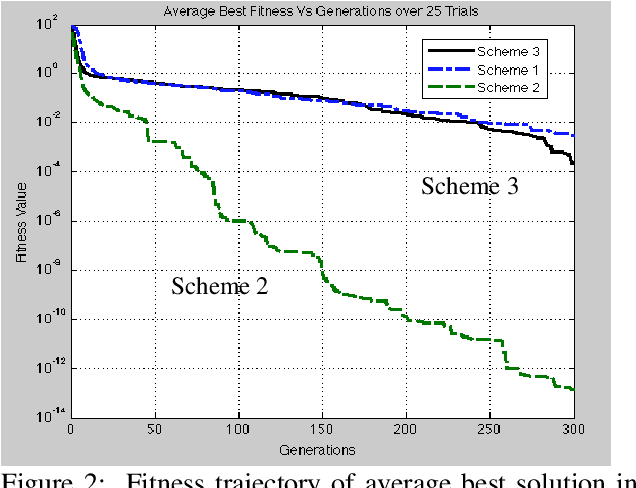
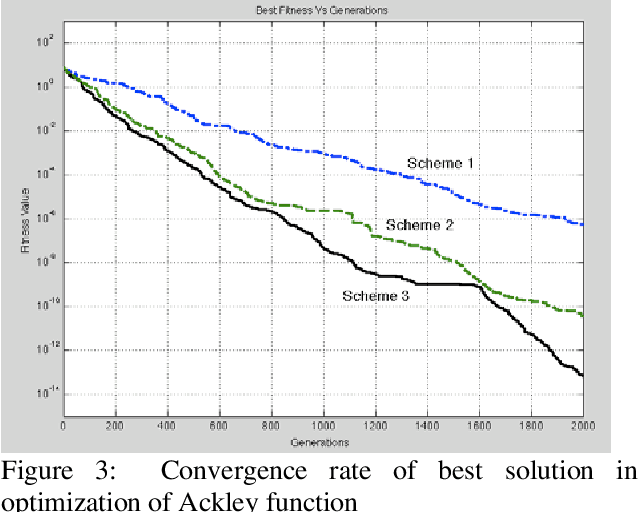
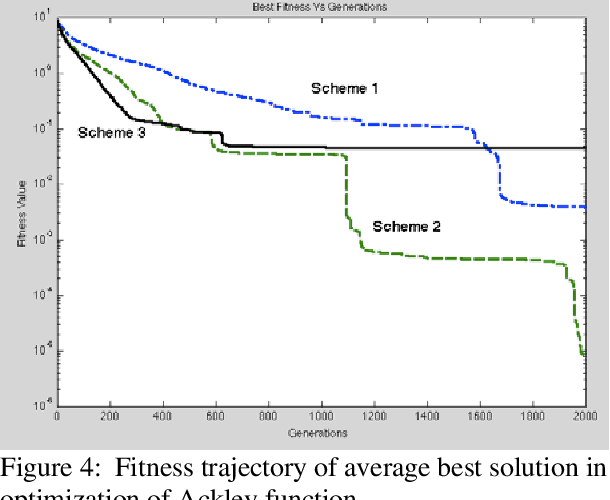
Abstract:In this paper, we introduce a new evolutionary optimization algorithm based on Tukey's symmetric lambda distribution. Tukey distribution is defined by 3 parameters, the shape parameter, the scale parameter, and the location parameter or average value. Various other distributions can be approximated by changing the shape parameter, and as a result can encompass a large class of probability distributions. In addition, Because of these attributes, an Evolutionary Programming (EP) algorithm with Tukey mutation operator may perform well in a large class of optimization problems. Various schemes in implementation of EP with Tukey distribution are discussed, and the resulting algorithms are applied to selected test functions and antenna design problems.
 Add to Chrome
Add to Chrome Add to Firefox
Add to Firefox Add to Edge
Add to Edge